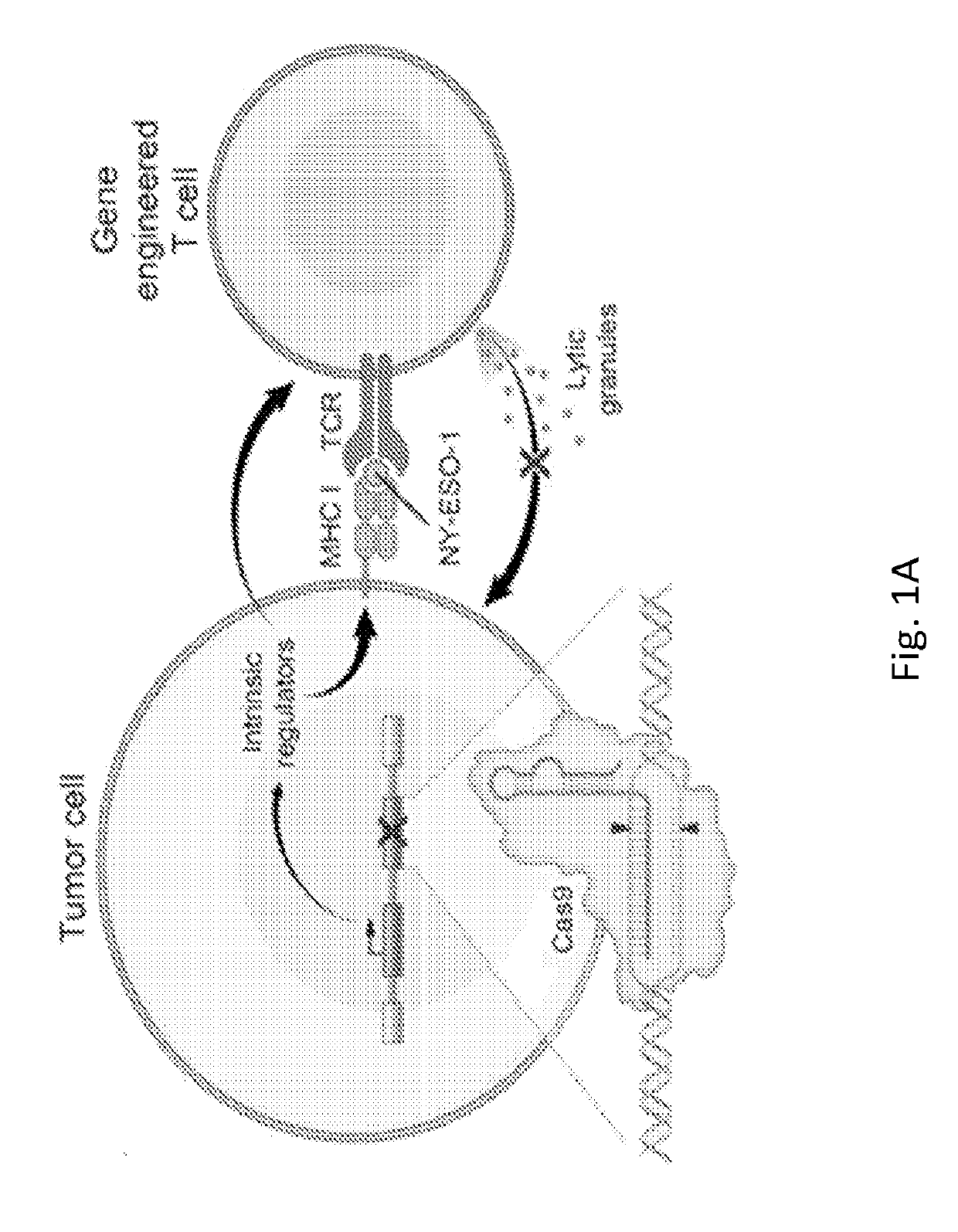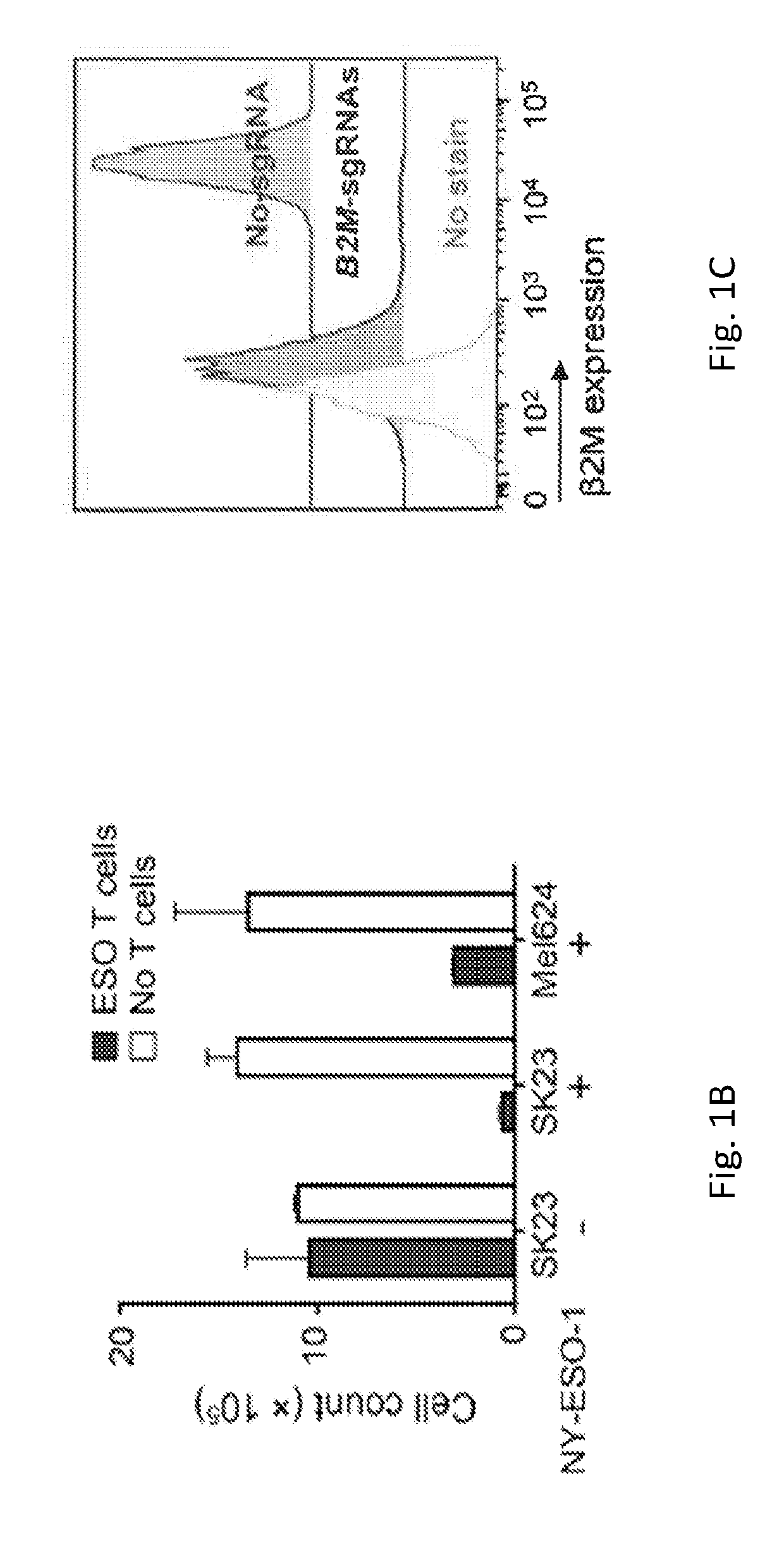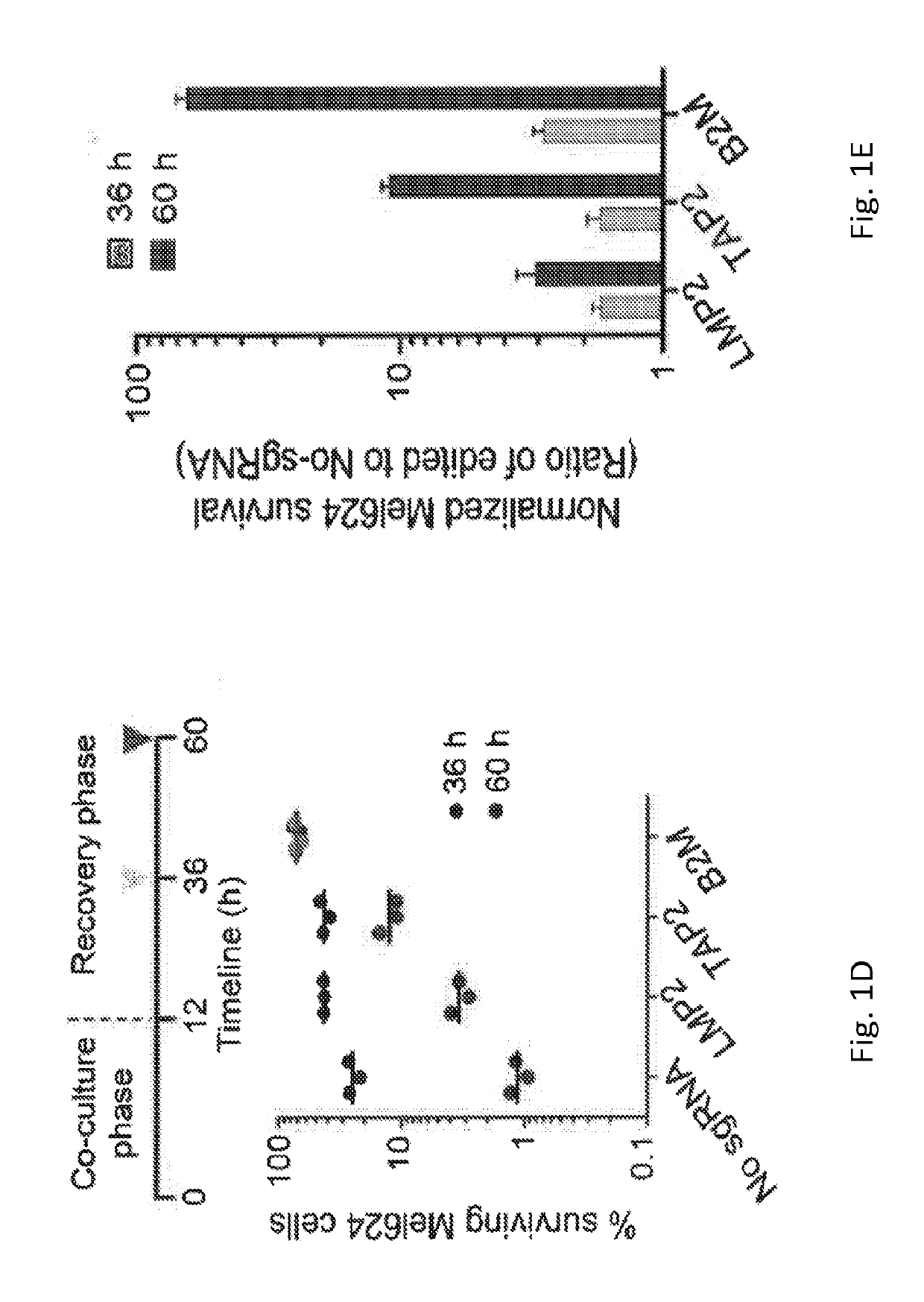Methods for selecting therapy for a cancer patient
a cancer patient and cancer technology, applied in the field of methods, can solve problems such as affecting the effectiveness of immunotherapies
- Summary
- Abstract
- Description
- Claims
- Application Information
AI Technical Summary
Benefits of technology
Problems solved by technology
Method used
Image
Examples
example 1
[0135]This example demonstrates that CRISPR-Cas9 mediated perturbation of genes in cancer cells resist engineered T-cell mediated lysis.
[0136]To identify the genes which confer sensitivity to T cell-mediated cytolysis to tumor cells, a ‘two cell-type’ (2CT) CRISPR assay system including human T cells as effectors and tumor cells as targets was developed (FIG. 1A). Unlike in vitro single cell-type screens or in vivo screens, the 2CT system uniquely allows one to: 1) understand how genetic manipulations in one cell type can affect a complex interaction between cell types; 2) perform the pooled screen with much higher library representation than cannot typically be achieved in vivo; and 3) identify novel genes and pathways which may not be detected by in vitro single cell-type screens or the uncontrolled environment of in vivo screens.
[0137]To develop the 2CT assay, T cell receptor (TCR) engineered human T cells that can specifically recognize and lyse melanoma cells expressing NY-ESO-...
example 2
[0139]This example demonstrates that a 2CT GeCKOv2 screen in Me1624 melanoma cells identifies genes that confer resistance to T cell-mediated cytolysis.
[0140]To identify the tumor intrinsic genes which confer sensitivity to T cell mediated cytolysis to cancer cells, a Genome-Scale CRISPR Knock-Out (GeCKO) screen was performed using the 2CT assay platform with different ratios of T cells to tumor cells (FIG. 2A). Specifically, transduced Me1624 cells were exposed to ESO T cells at E:T ratios that resulted in less than complete T cell-mediated tumor cell death after a 12 hour exposure (FIG. 5B). These screens with different E:T ratios were termed as ‘LoSelect’ (E:T=0.3) and ‘HiSelect’ (E:T=0.5) conditions. In each screen, the Me1624 cells were independently infected with two human genome-scale libraries: Library A containing ˜65,000 sgRNAs (3 sgRNAs per gene or microRNA) and Library B containing ˜55,000 sgRNAs (3 different sgRNAs per gene). To examine the sgRNA library representation ...
example 3
[0143]This example demonstrates the validation of the most enriched genes from LoSelect and HiSelect screens.
[0144]To validate top candidates, the 2CT CRISPR assay was performed using multiple individual sgRNAs (FIG. 9). Seventeen genes were selected based on two criteria. First, the gene must be present in the top 20 ranked genes in either the HiSelect or LoSelect screen (FIGS. 2E and 7A-7B). Second, the gene must be frequently mutated in patients with multiple cancer types curated in cBioPortal (Gao et al., Science Signaling, 6: p 11 (2013); Cerami et al., Cancer Discovery, 2: 401-404 (2012)) (Table 4). CTAGJB (encoding NY-ESO-1) was also included as a positive control. Using ESO T cells and Me1624 cells, it was found that 15 out of 17 genes had at least one sgRNA that showed greater than 25% resistant cell survival against T cell-mediated killing (FIGS. 3A-3C). Without being bound to a particular theory or mechanism, it is believed that loss-of-function mutations in these genes m...
PUM
| Property | Measurement | Unit |
|---|---|---|
| volume | aaaaa | aaaaa |
| viral volumes | aaaaa | aaaaa |
| viral volumes | aaaaa | aaaaa |
Abstract
Description
Claims
Application Information
 Login to View More
Login to View More - R&D
- Intellectual Property
- Life Sciences
- Materials
- Tech Scout
- Unparalleled Data Quality
- Higher Quality Content
- 60% Fewer Hallucinations
Browse by: Latest US Patents, China's latest patents, Technical Efficacy Thesaurus, Application Domain, Technology Topic, Popular Technical Reports.
© 2025 PatSnap. All rights reserved.Legal|Privacy policy|Modern Slavery Act Transparency Statement|Sitemap|About US| Contact US: help@patsnap.com



